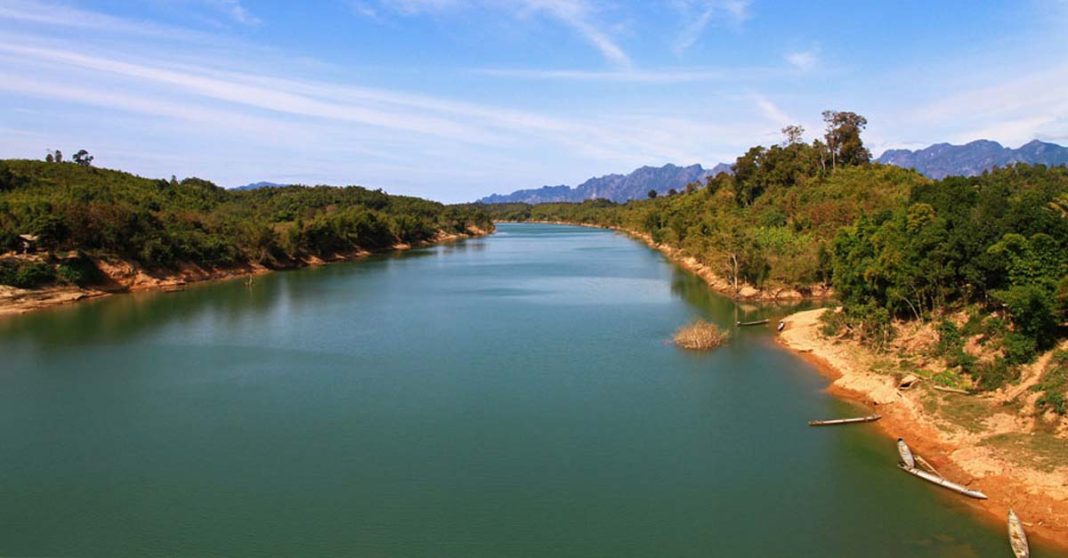The Mekong River Commission has released its 2022 Annual Report that documents multiple achievements over the past year, and key challenges facing the basin that require particular attention.
The MRC Annual Report 2022 chronicles the tangible improvements across the Mekong River Basin, achieved through the joint efforts and “water diplomacy” of Member Countries Cambodia, Laos, Thailand, and Vietnam and partners.
Among the most significant achievements last year were new guidelines for hydropower dam design, and transboundary environmental impact to facilitate fish movement and sediment flow; new navigation rules to foster greater river safety; innovative tools to better forecast flood and drought; a new monitoring station on the northern tip of the Basin to quickly detect water changes; and the launch of a Joint Study – together with the Lancang-Mekong Cooperation – to develop a shared upstream-downstream understanding of the changing water flow regime, which is seen as a prerequisite for more effective cooperation.
The MRC has already started implementing the transboundary environmental impact assessment guidelines or TbEIA, while the Joint Study has concluded its first phase. The study results will be shared at the 13th Regional Stakeholder Forum, which takes place on 5 October 2023 in Luang Prabang, Laos.
Moreover, as the MRC looks to fulfill both its Basin Development Strategy 2021–2030 and Strategic Plan 2021–2025, this Annual Report describes how the organization’s five Strategic Priorities – Environmental, Social, Economic, Climate Change, and Cooperation – not only benefit millions of Mekong denizens but contribute to achieving 10 of the international community’s 17 “Sustainable Development Goals”.
However, despite the positive news today – which now includes rainfall that’s 40 percent higher than in 2021 and 2022; water quality along the Mekong mainstream that remains “Good” or “Excellent” in most places; and better socio-economic growth and living standards across the region – the Basin continues to face significant challenges. In fact, in his April State of the Mekong address, Dr. Anoulak Kittikhoun, the CEO of the MRC Secretariat, cited five “troubling” trends: changing flow regime, nourishing sediment, salinity intrusion, plastic pollution, and flood and drought exacerbated by climate change.
As Kittikhoun states in this Annual Report, these challenges are transboundary by nature, so they require continued cooperation to tackle them, among the riparian countries. This includes the need for data sharing, negotiation, compromise, and openness to both regional and international partners.
“There is ‘one Mekong’,” Kittikhoun writes in the Foreword. “Ideally, we should embrace a Basin-wide approach to solution-seeking and decision-making, for everything from hydropower design and river monitoring to navigation rules and irrigation infrastructure.”
The MRC is the only intergovernmental agency entrusted by treaty – the 1995 Mekong Agreement – to safeguard the river; ensure equitable use of its water resources; and maximize economic development, while minimizing any harm done to the environment or riverine communities, namely the millions of fishing and farming families who rely on it for food and livelihood.
While differences will occasionally arise between national self-interest and what is best for the region, the achievements detailed in this Annual Report show that collaboration ultimately yields results, and will continue to do so in the future, according to a top Thai official quoted in the report.
“Today, the MRC has solid policies and procedures in dealing with transboundary water governance based on the cooperative principle, treaty obligations, and goodwill,” says Dr. Surasri Kidtimonton, a Member of the MRC Joint Committee for Thailand, who’s also Secretary General of the Thai Office of the National Water Resources and the Thai National Mekong Committee Secretariat.



